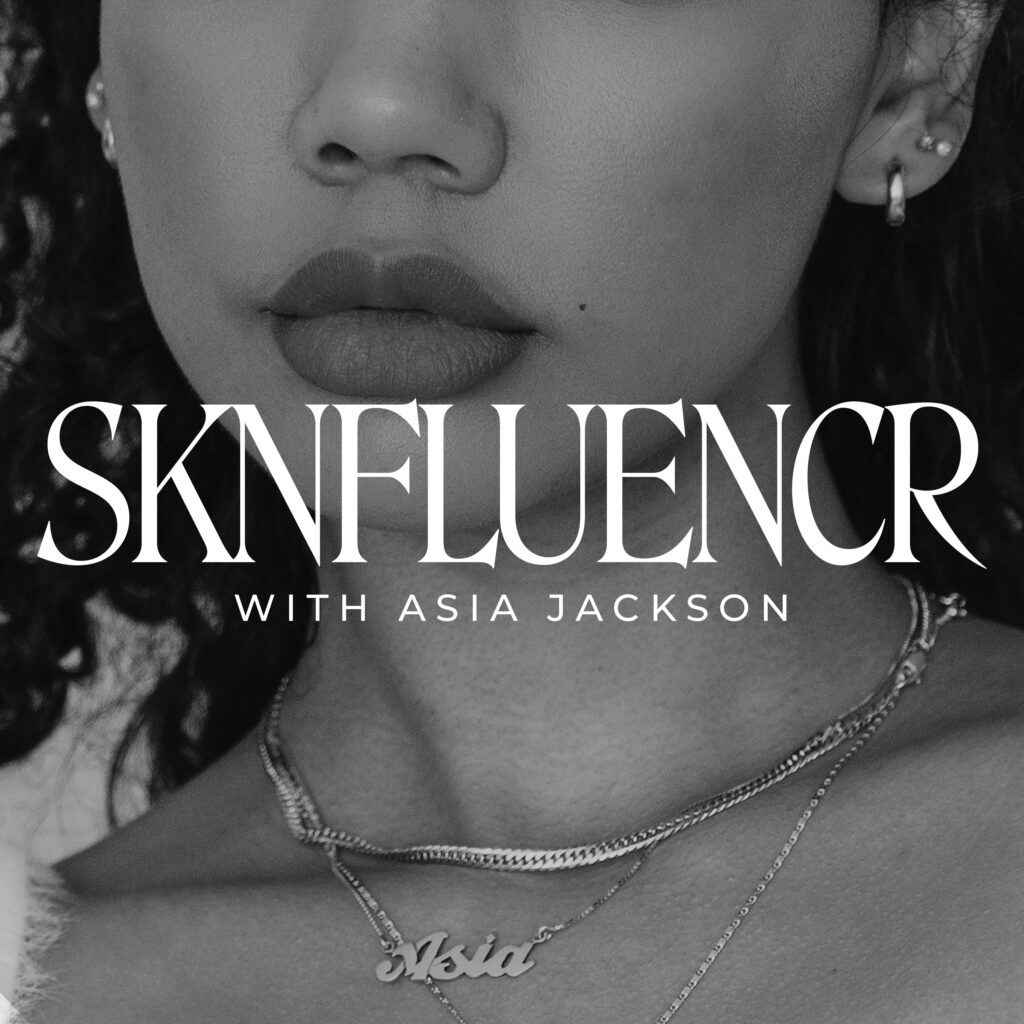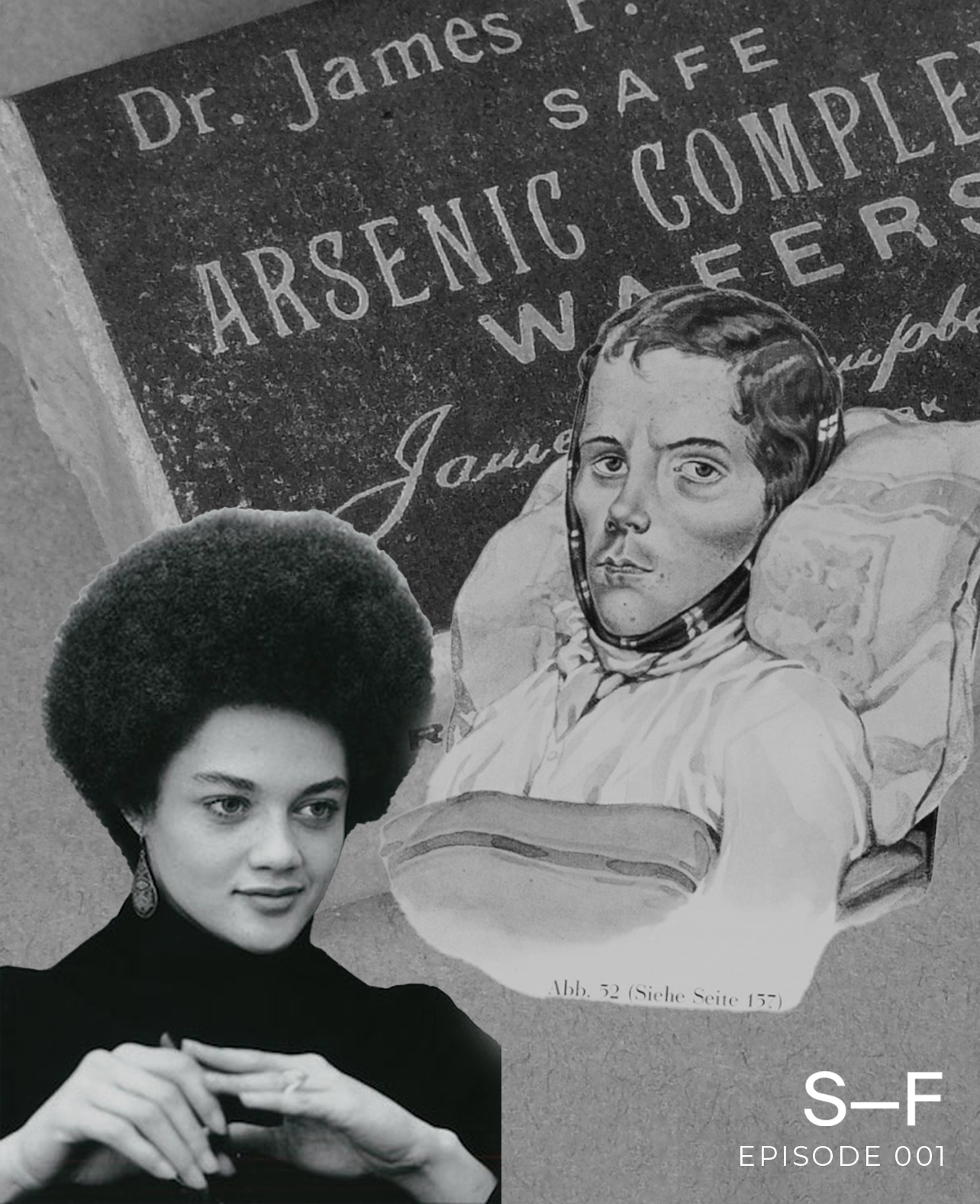The Afro Hairstyle & Pandemic Trends
10/07/2022
Episode 001
For SKNFLUENCR’s first episode let’s talk about what inspired me to create this platform, how a radical political movement inspired the afro hairstyle—arguably one of the most iconic beauty trends—plus, how beauty and interior design trends have been influenced by pandemics of the past.
See below for a transcript of this episode.

Episode Transcript
Asia Jackson 00:00:12 Welcome to the SKNFLUENCR podcast, a place where we can discuss, along with some very special guests, how beauty and fashion intersect with race, identity, and culture.
Asia Jackson 00:00:30 This idea stemmed from a viral movement that I created in 2016 called hashtag #MagandangMorenx, which literally translates to beautiful brown skin in Tagalog. And I created this movement to combat colorism in Filipino communities worldwide. And to celebrate the diversity of Filipino beauty. My dad is African American and my mom is indigenous Filipino. I used to live and go to school in the Philippines. And while I was living there, I was bullied for having darker skin.
The beauty standard in the Philippines dictates that fair skin is better. Tall, thin noses are better than the flat and wide noses that most Southeast Asians have. A lot of Filipino celebrities wear colored contacts because lighter eyes are considered more beautiful. These beauty standards however, didn’t just come up out of thin air. The Philippines has a colonial history of over 400 years. They were colonized by the Spanish and the Americans, and then they were occupied by the Japanese in World War II.
Asia Jackson 00:01:42 This desire for wider skin, thinner, taller noses and light colored eyes is a direct result of racism, white supremacy and colonialism. The effects of colonialism trickled down every avenue of Filipino culture in lifestyle. And eventually reached a 10 year old me who got bullied for having brown skin. The truth is that beauty standards, regardless of the country or culture in question will always be and have always been intimately tied to politics, colonialism, race, class, current events, and everything in between. And the same goes for fashion trends. I’m interested in exploring how all of this intersects with each other.
Now I wanna start off this first episode by sharing some fun facts or examples of how beauty standards and fashion trends have been influenced by or tied to race, identity, culture, class, cetera. So first let’s talk about Afros. So the civil rights movement that we are all familiar with was actually very much rooted in the belief in respectability politics.
Asia Jackson 00:03:01 A lot of leaders in this movement believed that the more “well behaved, well spoken, well dressed” Black people were, the more respect they would get from white people. Now with the mistreatment of Black people, still running rampant, the sustaining of Jim Crow and even the assassination of Martin Luther King Jr, we know now that this was just a pipe dream. What white supremacy consistently shows time and time again is that it doesn’t care how a black person dresses—what’s more important is that they’re Black.
Respectability politics is dictated by what white society deems appropriate. That’s why so many Black people pre-1970s straightened their hair. To make their hair look more acceptable to white people. Hot Combs and relaxers were invented solely for this reason. And actually a lot of the hair products that you currently see today in the ethnic hair aisle of drug stores are directly linked to racism.
Asia Jackson 00:04:07 Nearly all of the famous black celebrities in the sixties had straight hair, which insidiously implied that straight hair equals success. Now things started to visually change in the seventies with the rising popularity of the Afro. Now, when we think of the seventies, we think like disco platform, shoes, and Afros. Now what changed within the past decade that shifted a beauty standard for Black people so drastically? The Black Power Movement. In the mid to late 1960s, a social and political movement called the Black Power Movement started to instill racial pride within Black communities. An entire generation of young Black people started to reject the respectability politics that their parents’ generation so cherished.
Hair products like hot combs, irons, and relaxers were all criticized (rightfully) as tools of oppression. Many leaders in the Black Power Movement suggested that these products were used to make Black people feel ashamed of the way their hair naturally grows out of their head. Activist and former Black Panther Kathleen Cleaver was a really passionate advocate for Black beauty in the sixties and seventies. And I wanna share with you a small clip of Kathleen Cleaver talking about this sort of thing. Now keep in mind, this was very radical thinking back then. She said this in the year 1968. Take a listen.
Kathleen Cleaver 00:05:43 This brother here, myself, all of us were born with our hair like this. And we just wear it like this because it’s natural because, uh, the reason for it, you might say is like a new awareness among Black people that their own natural appearance, physical appearance was beautiful. And it’s pleasing to them for so many, many years, we were told that only white people were beautiful. Only straight hair, light eyes, light skin was beautiful. And so Black women would try everything. They would straighten their hair light in their skin to look as much like white women. But this has changed because Black people are aware and white people are aware of it too, because white people now want, uh, natural wigs. They want wigs like this, dig it. Isn’t it beautiful. All right!
Asia Jackson 00:06:33 Dig it. Isn’t it beautiful. All right. <laugh> God. I love that clip. So what we see now as such an iconic part of the aesthetic and beauty trends of the 1970s actually stemmed from a very radical political movement. And you’ll see just how intimately tied beauty and fashion trends are to things like politics, et cetera. as we start to explore more topics here on SKNFLUENCR. So make sure you are subscribed to the podcast, follow @SKNFLUENCR on Instagram, and signup for the newsletter at sknfluencr.com
Asia Jackson 00:07:22 The next thing we’re gonna talk about: current events! Or more specifically—pandemics. Did you know that architecture and interior design have been influenced by pandemics in the past? Yes. Even interior design is intimately tied to current events and politics.
Bathrooms during the Victorian era used to look a lot different than what they look like now. You know, bathrooms in the modern age, we have smooth impervious surfaces like linoleum. You know, some bathrooms have marble, if you got money. But bathrooms in the Victorian era used to be decorated with velvet drapes, carpet, wooden cabinetry. I’ve seen so many bathrooms from the Victorian era and it’s honestly kind of nuts how they were furnished and decorated back then. Like it, it, it was nuts and it wasn’t until infectious diseases started rapidly spreading around highly populated urban areas that the interest in diseases, sanitation and public health began to rise.
Asia Jackson 00:08:29 Now, the more research I do about this, the more wild it is to me, how much Western society didn’t care about public health back then, like is actually scary how much they didn’t care. But with the rise of the public health movement, along with, um, healthcare and science prioritizing infectious disease research—bathrooms started to change. They were no longer decorated and furnished like the other rooms in the home were.
Smooth and impervious surfaces like linoleum, stone, quartz, laminate all began to replace the carpeting and wooden cabinetry of the Victorian era bathrooms. Can you imagine having carpet in your bathroom? That’s nuts!!! So these smoother surfaces came to be known as more sanitary compared to carpet because they were easier to wipe down, clean, and sanitize. That quartz countertop that you got in your bathroom? That was directly influenced by a current event—pandemics! You wanna know what else was influenced by a pandemic? Skin tone.
Asia Jackson 00:09:44 That’s right, folks. During the Victorian era—again, what’s wrong with these people—pale skin and very thin frail bodies used to be highly desired by upper class wealthy women. Now, for some reason, <laugh> this beauty standard seemed to coincide with the symptoms and side effects of tuberculosis. People suffering from tuberculosis had dramatically pale skin, very thin bodies and red cheeks that had like a little bit of a glow. And for some reason, these upper class wealthy young women found this to be fashionable. So women started powdering their faces with white powders, and some of them even started using arsenic to achieve a pale complexion. Now, there is this advertisement that I saw during my research that said; “You can certainly possess a beautiful form, brilliant eyes skin of pearly whiteness. If you will only use Dr. Amit’s French arsenic complexion wafers, perfectly harmless <laugh>.”
Asia Jackson 00:11:04 Now in retrospect, we know how nuts this is, but back then? I don’t know. They probably didn’t know that you can be poisoned by arsenic, I guess, but it’s just crazy to think about all of the dangers women have been subjected to and are still subjected to honestly, to fit a beauty standard. But anyway, I digress.
In the late 1800s breakthroughs in science, healthcare, and medicine discovered that sun exposure and vitamin D actually have therapeutic benefits and could help combat not only tuberculosis, but rickets as well. Doctors and other medical professionals started to recommend and prescribe sun bathing to patients. And by the 1920s tan skin was seen as healthier and more desirable. So this beauty standard or this beauty trend was directly influenced by a current event—a pandemic! Isn’t that wild? Now you’re probably thinking about how tan skin is more desirable in the west and how pale skin is more desirable in Asia.
Asia Jackson 00:12:18 I have an article that is currently live on skinfluencr.com titled We Need to Stop Comparing Colorism to White Girls Tanning. Go check it out if that topic interests you.
This is just an introduction to the types of topics that will be exploring here on the SKNFLUENCR podcast. Be sure to check out episode two, which is now live with my best friend, Josh Liu.
Josh is a gender nonconforming celebrity hair stylist. He uses he/him/they/all pronouns. And you may know him as Ariana Grande’s hair stylist. Yes, that’s right. He is responsible for the ponytail. In episode two, we talk about gender identity and how it intersects with his personal style, mental health as a creative professional, and a bunch of other topics in relation to the LGBTQ+ community.
Thanks for tuning in. I hope you enjoy SKNFLUENCR. Be sure to check out episode two and I’ll catch you guys next time. PEACE!
